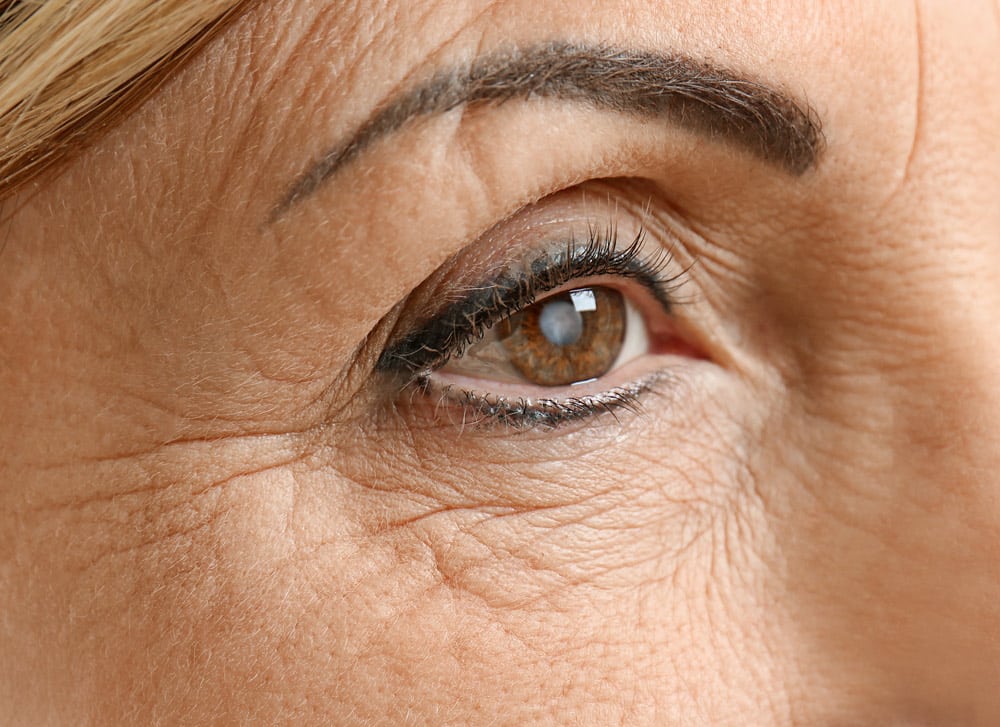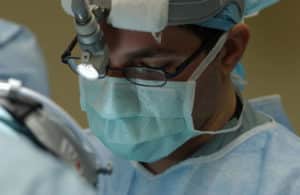If you’ve ever tried to peer through a fogged-up window, you’ve experienced a hint of what cataracts can do to your vision. Cataracts are a common eye condition, but to help you understand more, we’ll delve into the three main types of cataracts, how they affect people and why it’s so important to seek treatment.

What Are Cataracts?
Before we delve into the types, let’s explain exactly what cataracts are. The eye has 2 lenses that focus light and allow us to see. The front lens is called the cornea, the lens inside the eye is called the crystalline lens (or just lens). Cataracts are a clouding of the crystalline lens, which leads to a decrease in vision. They can affect one or both eyes and primarily develop due to ageing. However, they can also result from injury or exposure to radiation. There are three primary types of cataracts: nuclear, cortical and posterior subcapsular.
Nuclear Cataracts
Nuclear cataracts form in the middle of the lens, also known as the nucleus. In the early stages, this type might paradoxically cause a temporary improvement in your close-up vision due to an increase in myopia, a phenomenon colloquially referred to as ‘second sight.’ However, don’t be fooled, as this fleeting improvement will fade as the cataract continues to develop.
Symptoms: Alongside the temporary enhancement of near vision, signs of a nuclear cataract include progressively blurred or dim vision, reduced colour perception, and increased difficulty with night vision.
Cortical Cataracts
Shifting away from the central zone, we now find ourselves at the edges. Cortical cataracts form in the lens cortex, which surrounds the nucleus. These cataracts are characterised by wedge-like opacities that start at the outer edge of the lens and work their way towards the centre.
Symptoms: Problems with glare and perception of contrast, particularly in bright light, are key indicators of cortical cataracts.
Posterior Subcapsular Cataracts
Lastly, let’s cast our gaze to the back of the lens. Here we find posterior subcapsular cataracts. These form at the back of the lens, directly in the path of light on its route to the retina. This type of cataract tends to progress more rapidly than the other two.
Symptoms: Posterior subcapsular cataracts often bring about decreased reading vision, issues with glare and poor vision in bright light. These symptoms might manifest suddenly and worsen rapidly, often within months.
Why Is It Important To Have Cataracts Treated?
Left untreated, cataracts can lead to significant vision loss and even blindness. This not only impacts your ability to carry out everyday activities but can also affect your quality of life and independence. Cataract surgery, the primary treatment for this condition, is generally safe and effective. It involves removing the clouded lens and replacing it with a clear, artificial one. This procedure can restore quality of vision and improve your quality of life. Once a cataract has been removed it cannot grow back, meaning this surgery will last a lifetime.
Understanding these three types of cataracts and their respective symptoms is the first step towards proactive eye health. Remember, while cataracts are common, particularly among older adults, you don’t need to accept deteriorating vision as an inevitable part of ageing. Early detection, regular eye examinations and prompt treatment are key to preserving your eye health.
Concerned About Cataracts?
If you’re experiencing any of the symptoms listed above, don’t brush them aside. Book in to see us at Pacific Eye Clinic today. Our dedicated team of professionals provide comprehensive eye care tailored to your individual needs.
Based in Southport, our eye surgeon offers a comprehensive range of treatments for eye diseases, such as cataracts, glaucoma and macular degeneration. We provide day surgery and ongoing treatments for Gold Coast patients with cataracts, so you can correct your vision and live life to the fullest.
Author

Dr Marc Wei
Dr. Marc Wei is the principal specialist laser and cataract surgeon at Pacific Eye Clinic in Southport on the Gold Coast. He has 20 years of trusted experience in advanced laser cataract surgery and has completed more than 15,000 procedures over the course of his career.

Dr Marc Wei
Dr. Marc Wei is the principal specialist laser and cataract surgeon at Pacific Eye Clinic in Southport on the Gold Coast. He has 20 years of trusted experience in advanced laser cataract surgery and has completed more than 15,000 procedures over the course of his career.



